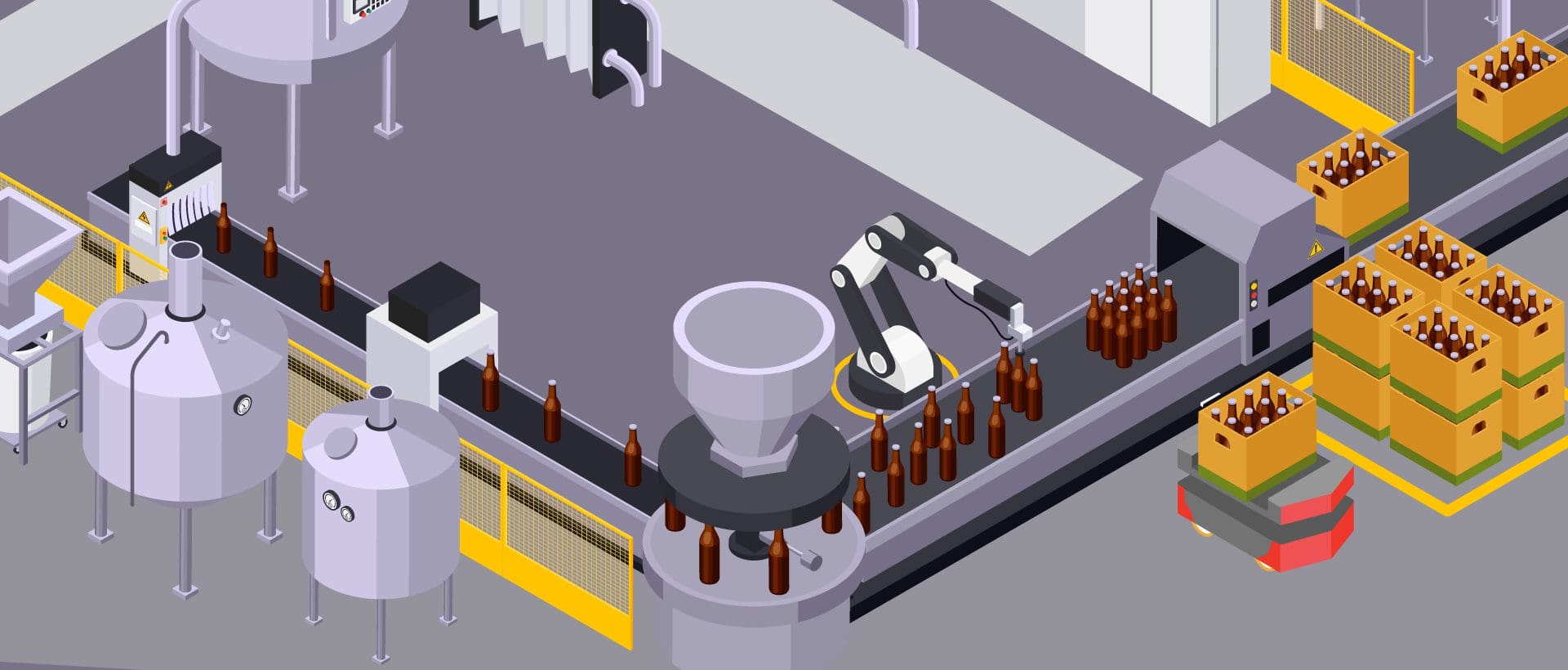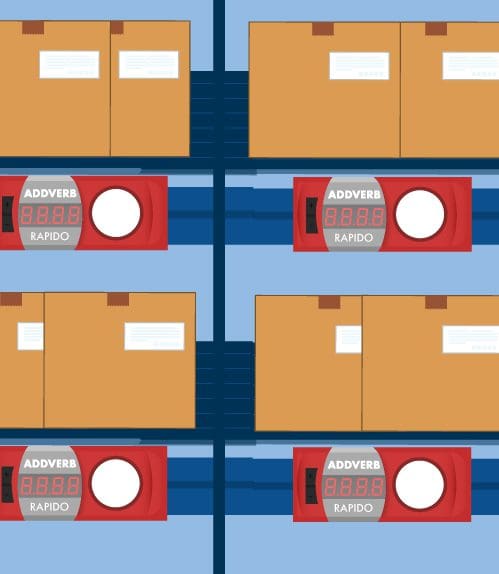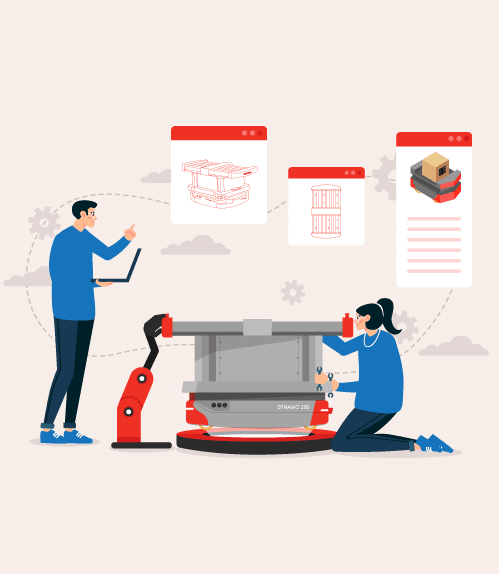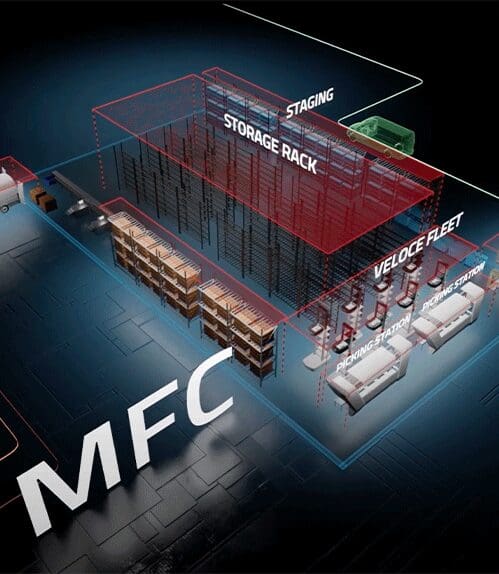Food and beverage manufacturers are relying on robotics and automation to tackle labour shortages and keep up with growth and labour-intensive e-commerce.
The food and beverage industry is continuously evolving. From production to delivery, it is a comprehensive process that must run smoothly to cater to the ever-growing consumer demand. Dealing with these challenges becomes even more difficult in times of crisis, such as COVID-19. After going through the challenges of labour shortages – grocery stores and food and beverage manufacturers are looking for new ways to improve sales both offline and online. However, the wave of technological advancement is enabling companies to optimise their food manufacturing process.
Automation in the food industry has become a popular trend that uses robotics, smart devices, analytics, artificial intelligence, the Internet of Things (IoT), data processing, and 3D printing to make food processing more innovative and productive. Advanced automation and intelligent production lead to benefits like shelf-life, food safety, consumer satisfaction, and business growth.
Large food service companies make their investment in robotics and Artificial Intelligence to improve their process of production.
Current Applications of Automation in the Food Industry
Food manufacturing: With the help of robotics, food can be easily segregated, picked, and sorted while keeping it consistent and clean.
Food packaging: Fast and efficient robotic packaging solutions can help workers meet market demands. Mobile robots assist in retrieving and storing inventories, leading to faster operations.
Food delivery: The rising demand for processed food is encouraging autonomous delivery. Drones are being utilised for delivering food.
Food sorting: Food sorting equipment based on AI can help in sorting and processing foods resulting in better quality, less waste, and higher production. Damaged or imperfect products can be sorted out effortlessly with the help of sensor-based visual filter technology, improving consumer satisfaction.
Supply chain operations: The supply chain can be upgraded with the help of AI by testing products at every level, managing inventory, food standards surveillance, staff monitoring and product tracking. Facial recognition and object recognition software can be used to detect if workers wear caps and masks as per food safety regulations.
How the Food and Beverage Industry can Benefit from Automation
Automation in the Food and Beverage Industry can help achieve greater efficiency, growth, scalability, improve traceability, increase workplace safety, standardise quality control, provide flexibility and overall quality. Automation has the power to attain better results with a lesser workforce. Robotic systems can look after several inconsistencies and human limitations that may curb the growth of food companies.
Labour shortages
COVID-19 gave rise to endless challenges, and the labour crisis was one of them. It created the necessity for the automated food and beverage industry. Numerous highly skilled workers became unemployed during the pandemic which created a challenging environment in the local F&B industry. The limited workforce and higher demand caused businesses to move in the direction of automation which eventually created an opportunity to reduce cost by integrating collaborative robots.
Prevent injury among the workforces
Automation reduces the need for performing repetitive, monotonous jobs amongst workers and can even take up the most risk-prone tasks across the production lines. It also allows your team to focus on core tasks to attain greater efficiency. Furthermore, automating production areas such as cutting and packing eliminates the chances of injury whilst increasing output.
Better quality control
A food business consists of several processes including production, supply, and distribution, all of these are required to be controlled to maximise the quality of the final outcome. Automation helps in identifying the problem before it gets aggravated, precisely detecting the source of the problem, and maintaining reproducible quality from one lot to another.
Flexibility
While it takes rigorous training and time to adapt to constant changes in this dynamic market, automated machines can be reconfigured as desired. The scale of operations can be taken up or down based on seasonal demands without affecting the number of workers employed.
Enhanced efficiency
If executed correctly, automation helps businesses save time, limit waste, and increase profits by establishing efficient processes and reducing operational costs. This is because technology can work 24/7 and collect intelligent data insights from the production line that can prevent errors and enhance efficiency.
Keep better track of your ingredients
Today, consumers want to know more about the source of their products and the entire journey they went through to reach their basket. Thus, to win consumers’ confidence, you need to gain awareness of the ingredients used in your supply chain.
Reduce food wastage
The reduction of waste has long been one of the most important goals to achieve for food industries. Due to the short shelf lives of certain perishable products, food wastage has always been a concern within a supply chain. Oversupply can also result in product wastage if not consumed in time.
Businesses can improve their supply and demand management through automation. An end-to-end solution can generate comprehensive data on the amount of stock required on the basis of real-time demand to considerably reduce food waste.
Conclusion
Despite striking growth in the F&B sector, there still exists a misconception that the human workforce will get replaced by robots. However, this is far away from the reality. On the contrary, robots have made a positive contribution to the lives of the workforce and operators by taking away monotonous physical work and giving them time to focus on more high-level tasks.
In opposition to elimination, a human-machine collaboration has come into the picture, where robots and people are working together to finish tasks. Collaborative robots, ‘cobots’are the least interfering solution that have become a turning point in numerous companies. These cobots can provide a wide variety of solutions, and can be deployed in environments with specific hygiene and climate requirements, which may not be safe for a human to be in.
They also play a key role in minimising workplace injuries with their advanced safety features that allow automated pausing or stopping. Cobots can easily undertake complex processes in environments with low oxygen, while ensuring that the food standards are met.
Artificial intelligence is another add-on in robotics solution implemented for F&B. These autonomous robots can simultaneously gather and process a number of parameters, which are as great as inspection, vision, and traceability systems. They can proactively monitor the assets and provide support, therefore, creating a new era in manufacturing.
Robotics and automation solutions are ideal solutions for the F&B industry, which runs on careful and zero-defect handling. From automated cooking processes and streamlined assembly lines to intelligent customer service and precise inventory management, robots have proven themselves to be invaluable assets in this rapidly evolving landscape. As technology continues to advance, we can expect robots to further lead the change, enhancing our dining experiences, optimising operations, and shaping the future of the F&B industry. With their unwavering consistency, speed, and adaptability, robots are set to revolutionise the way we produce, serve, and enjoy food, ushering in a new era of innovation and possibilities.








